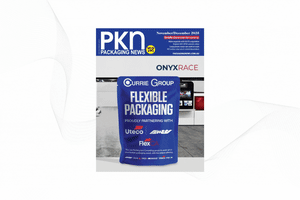Cold store technology has come a long way in recent years in providing efficient automation solutions around the world for meat, vegetables and dairy products, and labels and labelling equipment have in turn had to adapt to fill the needs of such chilly environments.
The managing director of identification systems specialist Peacock Bros, Neil Crump, says cold storage facilities place particular demands on labelling and associated technologies that need to be considered to ensure safe and traceable transport of goods from manufacturers and producers through to retailers and consumers.
Crump says Peacock Bros has worked hard to build a portfolio of specialised hardware and software solutions to provide fully automated solutions for the food and beverage industries.
“It is important to know that not all cold temperature and freezer grade adhesives are created equal,” Crump says.
“Understanding the application temperature and service range is critical when determining which adhesive to use. A freezer adhesive will not only have a low application temperature, but should stand up to frost, moisture and blast freezer conditions.”
“Freezer-grade adhesives are best used in conditions where you need good initial tack and ultimate adhesion when being applied in freezer conditions, or if being applied at room temperature and then flash frozen,” he says.
According to Crump, however, when adhesives designed for freezer-grade applications are not
absolutely required, a cold temperature grade adhesive could work better.
“Where you don’t need a freezer adhesive, move to a cold temperature adhesive,” he advises.
“Freezer adhesives are softer by nature in order to function in frozen environments. Due to the soft nature they are harder to convert and many will begin to lose adhesion and exhibit ooze even at room temperature.”
Blast freezing, however, presents its own challenges, Crump says. “Blast or flash freezing is used to freeze fruit and vegetables, not only because it’s quick but because fewer ice crystals form in the package.
“Once frozen through, the product is typically moved to a regular freezer. This is a case where a cold temperature adhesive might not be enough, even if the adhesive’s application temperature is below freezing, so a freezer adhesive should be considered.”
Crump says printing systems also have to stand up to the rigours of the cold chain. Label printing solutions, for instance, need purpose-built heater boxes to ensure printer functionality and also to keep the media at an effective application temperature.
Mobile computers used in cold storage are also designed with bigger buttons and highly sensitive touch screens to accommodate use of gloves, and hardware must be designed to withstand condensation.
However, Crump warns that cold operating environments will reduce the lifespan of most battery- or cell-driven equipment.






